In the body future mother during pregnancy, various changes occur, associated with both internal systems and appearance.
For example, the appearance of new moles (especially hanging ones) is considered a common problem. Often, such neoplasms are harmless and are justified by the physiology of this period, however, some of them can really threaten health.
Hemangioma or dark red patch on the skin of the vulva
A hemangioma appears as a dark red spot on the skin. Although most genital hemangiomas are located in the labia majora, the labia minora, perineum, and perineum may also be affected. According to a study published today in the British Journal of Dermatology, the number of moles in right hand can serve as a representative sample for calculating the total body number and thus assessing the risk of developing skin cancer.
Researchers at King's College London say that people with more than 100 moles in their bodies have a five times increased risk of developing skin cancer or melanoma, their most aggressive form. this risk is still the number of moles, but counting one by one takes too long, experts say, who focused on finding a "proxy" area that would function as a predictor of the total number and found that the one that performs best this role, represents the hand of the right.
That is why any skin changes should be shown to an oncologist and, if necessary, a tissue biopsy should be taken.
What are moles
In fact, this benign formation is a pigmented area of the skin, which appeared as a result of an increase in the concentration of melanocytes in the cells. Also, a mole has a medical name - nevus.
They found that people with more than 11 moles - of any kind - in that limb are nine times more likely to have a hundred in their entire body and therefore an increased risk of skin cancer. The results can have a significant impact on primary health care as it allows physicians to more accurately and quickly estimate a patient's total moles by analyzing the accessible body part.
Should it always be deleted?
For the job, specially trained nurses at St. Thomas Hospital examined about 700 healthy twins over eight years over the course of eight years. They counted hills from 17 body regions and also collected information about their skin type, hair, eye color and freckles. The results were replicated in a control group of 400 men and women from the UK with melanoma, allowing the researchers to evaluate this model as a "very useful tool" from the number of moles in hand right.
Normally, each person develops new nevi throughout life, especially during the period of active hormonal changes (puberty, pregnancy, menopause, etc.). Also, new moles can appear under the influence of ultraviolet radiation.
Education differs in the following ways:
- color (brown, black, pink, purple and merging with the skin);
- size (large, small);
- shape (point, convex, hanging).
If you notice that the volume or color of the nevus has changed, the area turns red, itches, burns, or blood is released, you should immediately contact a dermatologist or oncologist to prevent the risk of developing malignant melanoma.
Dermatologist and study co-author Véronique Bataille believed that if a patient visits their doctor because they are concerned about an abnormal shape of a mole, counting the number of the right hand "may be alarming" and indicative of the need to consult a specialist.
Roffo, says the study "is an attempt by the working group to try to identify a group with a greater predisposition to skin cancer, but this does not allow us to discard patients." The study, he said, does not shed any light on the subject. People who have more moles are more likely to get skin cancer. Suddenly, they take a parameter equal to 11 in their right hand.
New moles in expectant mothers
Many pregnant women panic about the sudden appearance of new moles on the body or the modification of old ones. Why do they arise?
In the case of pregnancy, the culprit for the appearance of nevi is hormonal failure and restructuring of work endocrine system, iron. Also, the development of moles can be affected by some drugs that a pregnant woman takes. Often, over the summer, the expectant mother has several new moles, which is associated with active exposure of the skin to solar ultraviolet radiation. That is why pregnant women are advised to sunbathe moderately in the open sun.
But do not get angry and start counting the moles of the hands, he reassured and advised: Those who have many moles should go to the doctor to check the skin. The development of melanoma is multifactorial. The number of moles is only a risk factor over 20, which is not analyzed in the article, Cesaroni said. These factors include white skin blond or red hair and light eyes, an age that received an intense intermittent-type solar exposure, among others.
Limit sun exposure between 10 and 16 - Use sun protection factor with odds of 30 or higher. Reapply every two hours or after sweating or immersion in water. - It is necessary to place the protector 30 minutes before exposure so that it is absorbed. It is ideal to put it before putting on the mesh. - Wear hats and Sunglasses. Go to beaches or places where you can hide in the shade at noon. - Clothes really protect, especially special clothing for people with thinner skin. - Do not take sun bed sessions.
Interestingly, it is the presence of new moles that indicates the quality work of the endocrine system. Sometimes after the birth of a child, such formations disappear, and sometimes they remain, recalling the happiness of the emergence of a new life.
When nevi can be dangerous
The expectant mother should regularly examine moles on her body, especially new ones. Sometimes it happens that old and new nevi begin to transform and change.
Causes of freckles: the sun and the hereditary factor
It is this barrier that protects us from external environmental agents that can affect our health, such as bacteria, dust, and especially the sun. The same process of stain formation makes it clear that sunburn makes the color and size of the skin worse. However, the sun is not the only reason for its appearance: it is extremely important in the tendency to develop freckles on the skin. They tend to be genetically inherited, and in addition, they are more common in people with clean skin and blonde hair or red.
You should be wary if you noted the following metamorphoses:
- the formation has darkened or changed color in a different range;
- the spot has grown in width;
- the shape has changed (the flat motherland has become convex, hanging);
- discomfort, itching, burning, redness or pain in the area;
- the mole is inflamed and bleeding;
- the area is swollen or numb.
Information In the case of such changes, do not panic, however, contact a dermatovenereologist or oncologist. In most situations, a change in a mole caused a hormonal surge, but it’s worth being safe.
Freckles, signs of skin diseases?
Some twin studies have found a striking similarity in the number of freckles found in each pair of siblings, supporting the fact that the presence of defects is due mainly to hereditary problems. In a small number of cases, they are signs of a rare genetic disease called neurofibromatosis. Apart from this disease, the spots are not signs of other abnormalities and are not signs. Some are oddly colored or unusually sized, or located in strange areas of the body - such as the soles of the feet or the back - and are considered cancerous, but in this case they are moles.
In any case, before and after going to the doctor, regularly monitor the “suspicious” nevus and follow a few safety rules:
- hide it from the influence of sunlight and ultraviolet radiation (sunburn and solarium are not recommended);
- isolate the area, avoid rubbing it with clothes, injury with a washcloth or hand;
- if the area itches and turns red, in no case do not comb the formation and do not apply unknown compresses, applications, dressings and ointments;
- if you have noted the accumulation of fluid in the mole, it is forbidden to squeeze it out or warm it up, but you should immediately consult a doctor.
Is it possible and worth it to remove a mole for pregnant women
Expectant mothers often worry about whether it is possible to remove moles if they have changed or grown.
Many people are unhappy when they see freckles on the skin of the face, chest or hands, and therefore they decide to have a medical intervention to erase them, because thanks to laser technology, the spots can be eliminated. Do you know how freckles were made? Tell me, do you have a lot of freckles in your body? Are they hereditary or solar?
Best answer: Moles are growths on the skin. They occur when skin cells called melanocytes grow in a space surrounded by tissue. A person can develop new moles before the age of about 40 years. Moles are usually pink, tan, or brown. They are usually round or oval and no larger than a pencil.
Doctors consider removal a strict necessity in situations where there is a risk of nevus degeneration into melanoma. As a rule, this happens rarely - once in 100 thousand cases. However, malignant melanoma is almost always fatal, so it is best to prevent this situation, even if there is a small chance.
Nearly one in ten people have at least one unusual home that is different from normal moles. The medical term for these unusual moles is dysplastic nevus. These moles may be more likely to develop melanoma, a type of skin cancer, than common moles. For this reason, you should see a doctor to check for any mole. different kind, taller heights, changes in color or shape, or in any other way.
Reasons for the disappearance of moles
Lunar, in popular parlance lunar term refers to all persistent blemishes in the dermis and is broadly termed lunar for any skin changes that present/show differences in pigmentation in relation to most of the skin, for this reason they are nominated moles of other plasmas with a similar appearance, such as nevus, angiomas, and even some aspects of melanoma and keratosis.
Information Precancerous nevi are removed only after childbirth. An immediate operation is prescribed only in extreme cases and with the obligatory signing of papers on consent to possible consequences and complications.
The removal procedure is local anesthesia quite quickly and painlessly. There are several popular ways to get rid of unwanted education.
Care All people have moles, the mole can be characterized as a benign tumor and therefore usually goes without any problems, the typical color of the mole is brown, when the colors differ, the most problematic nevus is already considered. Excision or extirpation of moles is recommended under the following circumstances.
When they are located in areas subject to frequent friction, pressure or impact, or very exposed to ultraviolet radiation. When it's too big. When contours are irregular or asymmetrical. When a common mole changes color or another appearance. When a common mole is surrounded by a reddish aura, or when it bleeds. When they sting or persistently hurt. As they grow over time. People with a lot of moles are advised to take special precautions against ultraviolet radiation.
- Laser excision. The most modern and popular method that helps to burn a mole without the need for anesthesia. This method guarantees complete removal education along with the root, which prevents the risk of re-development. Also, the skin heals in 2-3 weeks, after which no traces and pits remain at the site of the nevus.
- Surgical excision. Carried out in case of a positive conclusion and permission of the oncologist. Accompanied by drug therapy.
- Cryotherapy. AT outpatient settings the doctor burns education with the help low temperatures resulting from the application of liquid nitrogen.
- Electrocoagulation. A fairly common method that helps to remove a mole under the influence of a high frequency current. The doctor captures the formation with a special loop and burns it out, after which a small light scar forms at the site of the procedure. It is performed under local anesthesia.
- radio wave method. A less common method that involves the use of radio wave shocks in the removal area.
Why is it not recommended to carry out such simple procedures during pregnancy? The fact is that with careless handling, the technology can be broken, which will cause irreversible damage. side effects. For the same reason, you can not remove a mole on your own, resort to the services of healers, healers or girlfriends.
They can be sensual or somewhat grotesque, go unnoticed or bring us glory. Exist different types moles, some of them are in our skin from the moment of birth, but most of them appear as they grow. AT adolescence this happens when more is formed, due to the transformation that the body experiences at this stage. Excessive exposure to the sun or periods of heavy hormonal changes such as pregnancy can cause us to get more moles.
Moths occur when the group of melanocytes responsible for applying pigment to our skin clusters into a small cluster, usually round. Because they are an amalgamation of several of these cells, the result is a color mark that stands out from the rest of the skin, sometimes becoming a signature cue, as in the case of celebrity former model Cindy Crawford's crazy feeling.
Normally, new moles do not cause concern to either the mother or the baby, and therefore do not require increased attention. However, due to the rare possibility of a tumor degenerating into a tumor, carefully monitor a nevus that has undergone transformation.
It is hard to meet a person who does not have moles. They can be either congenital or appear throughout life. A healthy adult on the body can have up to a hundred spots of various shapes and sizes, and their number can constantly change. Are you worried about the appearance of moles on the body? The reasons for their formation and types will be considered in this article.
Excessive sun can cause new clusters of melanocytes to appear on our skin in the form of moles or freckles. Most moles are benign, but we are not exempt from melanoma formation, so it is recommended to visit our dermatologist for an annual review. If you notice that one of your moles has changed size, shape, color, bites or burns, contact a specialist immediately.
People who are very white and have too many moles and spots on the dermis should be protected twice during sun exposure because they more likely form melanomas, which can become. Remember that the skin is the largest organ of our body, also the most exposed, so we must take care to keep it healthy and avoid spots or moles, which can be a problem.
Definition
In medicine, a benign formation on the surface of the skin is called "nevus pigmentosa". Usually, a mole does not pose a danger to human health. You should consult a doctor only if the stain changes shape, size, or any symptoms appear. pain in this region.
Formed from pigment cells located between the inner and upper layers of the skin. Basically, they are inherited, therefore, if parents have nevi on their bodies, then their child will most likely also have them.
We invite you to consult a doctor in case of any condition or discomfort. If you want to read more articles like this one, we encourage you to enter our category. They usually go unnoticed, and when disturbed, they can be removed, just like papillomas, better known as moon meat. This type of lesion corresponds to benign tumors.
They are characterized by slightly elevated lesions, meaning they protrude from the surface of the skin and may have a small, thin stalk that connects the two areas. They measure approximately 3 mm. diameter, are soft, mobile, and asymptomatic, but may curl up on themselves and become inflamed and painful.
Kinds
Absolutely all moles differ from each other in their shape, size and color. They can be blue, red, brown, have a relief or smooth structure.
According to the shape and features of the mole are divided into the following types:
- Hemangiomas are moles of vascular origin. Most often on the human body there are hanging and red moles of this species.
- Flat - these are spots formed in upper layers dermis. They arise as a result of a specific accumulation of melanocytes. Such moles usually do not change in size and do not show activity under the influence of sunlight.
- Elevated (convex) - nevi of this category have a tuberous or smooth body, and their formation occurs in deep skin. The diameter of these spots rarely exceeds one centimeter, very often they can be covered with hairs.
- Blue are rare moles that stand out slightly on the body. Their color ranges from dark blue to light blue. Such formations have a smooth, dense structure and can be of considerable size.
- Large pigmented spots - usually appear at birth and grow with the body throughout life.
The appearance of moles on the body: causes
Pigmented nevi can appear in a person at any time, although it has been established that most of them occur before the age of 25 years. The most active growth is observed in adolescence, when the body is formed.
When they occur in large numbers or on more brown and rough skin, problems related to glucose or other diseases may be suspected. “In these cases, you should consult a specialist,” the specialist explains. Although the origin of papilloma is unknown and, in general, they are not dangerous, they should be considered that they warn of hormonal imbalance.
However, if they are isolated and the patient is concerned about friction with clothing or other materials, they can be cut out on an outpatient basis. How to distinguish them from warts? It is very common to confuse those moles with a red color with warts. However, the latter are actually caused by a virus and are only related to aesthetic adherence.
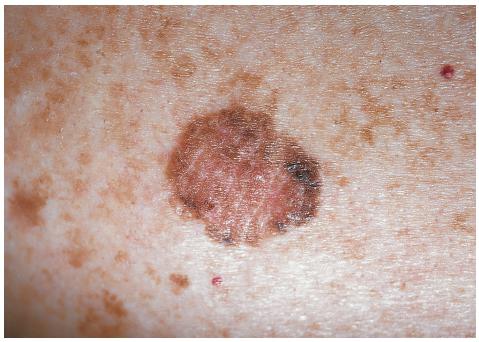
The reasons for the appearance of moles in adults are varied, and the main ones are:
- exposure to solar radiation;
- change ;
- mechanical damage to the skin;
- internal diseases of the body;
- infection of the surface of the dermis;
- hereditary predisposition.
Most often, the appearance of moles is stimulated by the sun's rays. Caution should be taken when sunbathing for people with and also for those who have more than 30 nevi on their body. The appearance of moles is related to hormonal surges in the body, which can occur during puberty, pregnancy, menopause. Moreover, during these periods, spots can both appear and disappear without a trace.
The appearance of red moles (angiomas)
Such formations are benign and are formed due to the accumulation of vascular cells of the dermis. Most often they appear at birth and in children under the age of one year. In some cases, red moles are huge and represent a cosmetic defect.
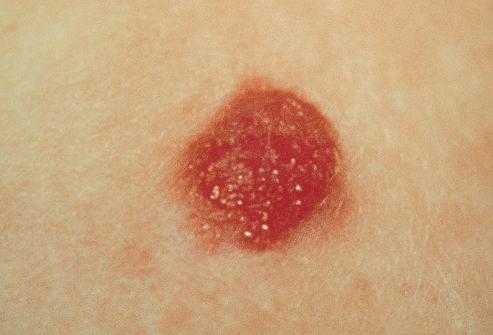
The main reasons for the formation of this angioma include:
- consumption of certain medications during pregnancy;
- unfavorable environmental conditions;
- which the pregnant woman suffered in the first trimester of the gestational period.
Doctors do not consider red angioma as a malignant formation. The degeneration of this nevus into a dangerous oncological form is extremely rare. However, it can provoke a number of unpleasant pathologies, suppuration and contribute to the penetration of infection into the body.
If the angioma occupies a large area of the body or is located in a place that is not protected from it, it must be removed surgical method or laser.
Features of moles
In their structure, nevi can be flat or rise above skin by a few millimetres. A bulging mole can be uncomfortable, especially if it is in an uncomfortable place and is regularly touched by clothing. In this case, it is better to remove it.
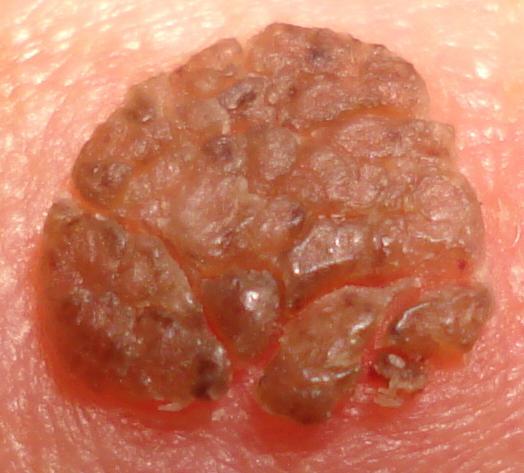
The operation is performed in the dermatologist's office after a detailed examination of the spot and the study of the obtained tests. It is extremely dangerous to remove any formation on the body on your own and is fraught with negative consequences.
A red convex mole is especially unpredictable. Usually it is formed when a blood vessel is mechanically damaged and is felt on palpation. It also refers to benign formations and often disappears on its own.
If you find a massive appearance of moles on the body, the reasons may be of a different, rather unfavorable nature. Mostly red nevi occur when hormonal disruptions, disorders in the work of the pancreas or radiation exposure.
Dangerous moles
Usually nevi do not pose a threat to health and do not cause pain. However, with abuse of the sun or with mechanical damage, they can degenerate into a malignant formation. Shades provide the greatest danger, but according to doctors, the lion's share of oncological rebirths comes from ordinary brown moles.
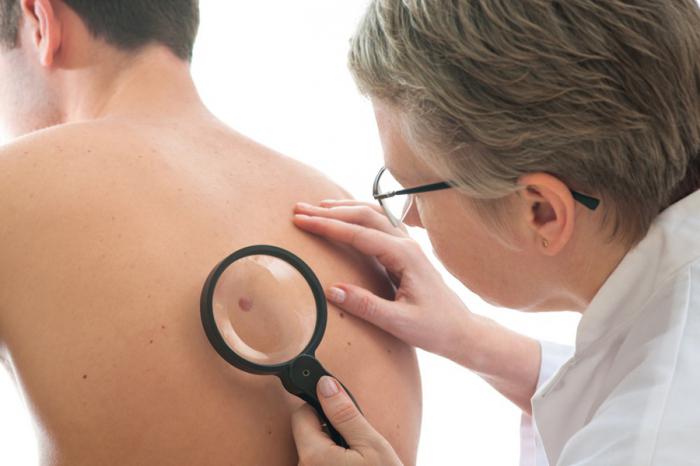
You should pay attention if:
- the appearance of the mole has changed, it has acquired an asymmetric shape with blurred borders;
- an inflamed ring of bright color appeared around the nevus;
- the shade of the mole suddenly changed;
- its structure acquired relief, black nodules appeared along the perimeter;
- the nevus has significantly increased in size and thickened;
- there were pain sensations in the form of itching, burning, tension;
- cracks appeared on the surface of the mole;
- periodically the spot bleeds, hair loss is observed in this place.
Malignant moles can develop rapidly, so if you find any suspicious symptom, you should immediately consult a doctor.
melanomas
This type of formation is malignant and is formed from the cells of the dermis that produce melanin. Every year, there is a high incidence of this type of skin cancer all over the world. Melanomas are very dangerous tumors, as they have a pronounced tendency to reappear and metastasize. These malignant moles mainly develop at the site of the affected nevus.
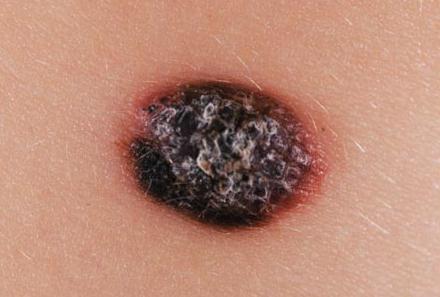
The main symptoms of melanoma growth include a change in the shade and size of the mole, as well as pain that worsens when pressed. Special attention should pay attention to the rapid increase in the spot. This may clearly indicate that melanoma is developing. A mole can itch and bleed, causing discomfort and pain to a person. Therefore, if any changes are found in the area of the nevus, it is better to consult a specialist.
Be careful!
Pigmented nevi can form anywhere on the body. However, you should be careful if you have a mole on your back. Due to this location, you will not immediately be able to notice a change in its structure or shape, so you need to regularly examine the mirror or seek the advice of a doctor.
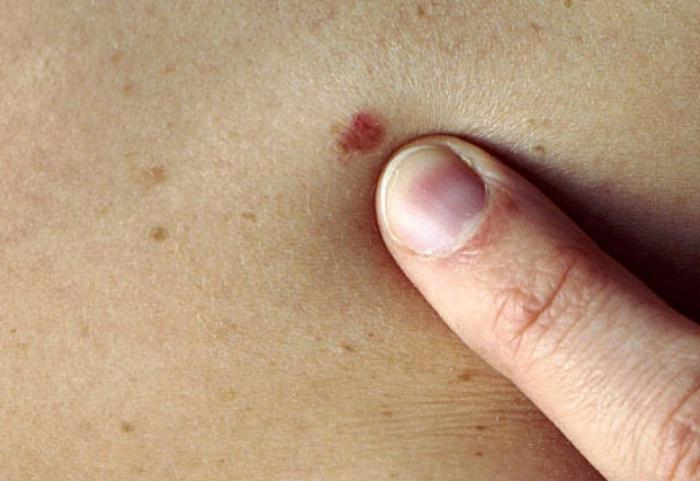
The regular appearance of moles on the body, the causes of which you do not know, can be an alarming signal. Pay attention to your lifestyle: stay less under the scorching rays of the sun, eat right and try not to touch the nevi with details of clothing or shoes. At the slightest suspicion of the activity of a mole, contact a specialist. A favorable resolution of any disease is its timely detection and competent treatment.









